The ultimate Mega Man retrospective
Mega Man Week kicks off with a massive look back at Capcom's enduring mascot
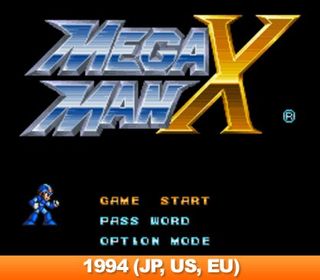
As popular as Mega Man is/was, Mega Man X has grown from spin-off to its own massively sequeled franchise, apparently eclipsing classic Mega Man in fame. It's a bit more serious and darker than the eye-meltingly colorful main series, but even still it's about a robot beating other robots and stealing their powers. Instead of "-Man," they're now known as "Mavericks" and are all based on animals:
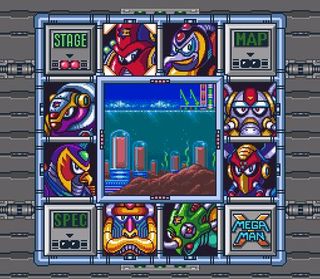
Launch Octopus | Chill Penguin
Armored Armadillo | Flame Mammoth
Storm Eagle | Boomer Kuwanger
Spark Mandrill | Sting Chameleon
X was a total reinvention of the series, a perfectly executed update that had fans anticipating its release with a fervor the franchise hadn't seen since the Mega Man 2 and 3 days. There are plenty of little touches that made it great (wall jumping, cool visual effects, a hidden Hadouken from Street Fighter II), but what really set X apart from the others was his new set of armor:

By the time you'd found them all, X was a wholly new creation, not even the same blue as his NES ancestor. There's all kinds of story elements we could go into, but none are really important in the grand scheme except the inclusion of Sigma and Zero. The former is the new Dr. Wily of the X series, usually claiming top villain status in anything "X," and the latter became so popular he earned his own series later. That'd be Zero, the red-suited, blonde-haired hero seemingly designed to appeal directly to anime fans.

Zero, X and the "mature" dystopian setting have pushed Mega Man X to eight numbered entries, Game Boy Color ports (sickeningly called Xtreme), a PS2/GC RPG Command Mission and a PSP remake called Maverick Hunter X. X3, a late SNES game, still fetches a high price on eBay, partly due to a limited run and probably more due to the fact that everyone was moving on to PlayStation and N64. Mega Man X flourished even there, amassing a pile of games that outnumber plenty of other popular franchises - not bad for a spin-off. Seriously, look at the list of X bosses, it's friggin huge. Who knew Volt Catfish and Toxic Seahorse would be so popular?
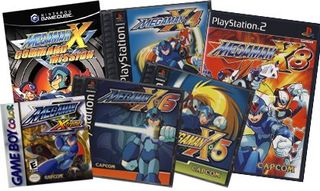
Only one X# game strayed from the formula (X7) and its crime was the same as Castlevania 64 - trying to cram 3D gameplay into a fiercely 2D series. It was also the last attempt at such a change, though there was on brief foray into 3D that seems totally lost in this day and age...
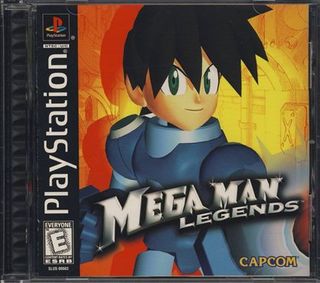
The Legends series started in 1998 and was a complete overhaul in every way. Gameplay was roaming 3D and was more about exploration than constant shooting (Super Mario 64 probably had a hand in this departure). Ultra nitpicky gamers (we'll lump ourselves with 'em) wondered why Mega Man's standard helmet, present in every single game since 1987, was missing and prominently omitted from the cover. To be fair this isn't classic Mega Man nor is it part of the X series, it's a wholly new universe with only one sequel and spin-off (a spin-off spin-off, yeesh). Inafune has stated before that a proper 3D Mega Man sequel could be made for $15 million and he'd be happy to do it, but uh, are there enough potential customers to recoup that investment? If it used Lost Planet's chest-caving visual punch, we're inclined to say "yes." Until then, we'll have to make do with the other two:
Sign up to the GamesRadar+ Newsletter
Weekly digests, tales from the communities you love, and more

Tron Bonne and her LEGO-esque Servbots are the biggest contribution Legends made to the Mega-verse, going on to have prominent roles in Marvel vs. Capcom 2.
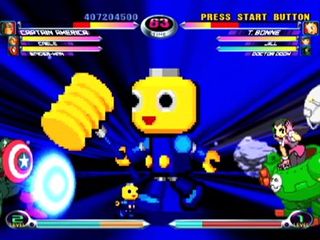
Bonne is a gloried thug, happily stealing money to pay off a massive debt. It's one of the weirder side-stories in the franchise and loaded with gameplay Mega Man worlds generally don't see, and as such is a great oddity to try if you missed it the first time (odds are you did). The next iteration of Mega Man would buck trends yet again, capitalizing on the latest craze to ensnare kids' attention: card battling.
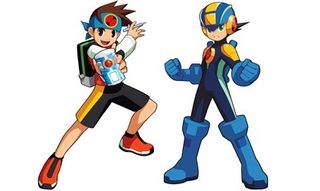
Battle Network began on Game Boy Advance in 2001 and turned Mega Man into a computer program called MegaMan.EXE (that's an executable file, for the four of you who haven't been paying attention to file extensions). He only exists within the internet-made-physical, so you balance play with his owner, a boy coincidentally named Lan. Battles are more akin to RPG than platformer, with hit points and massive amounts of inventory management.
You have to constantly keep tabs on your chip collection, which act like cards in a deck. Each does something different and can be traded in for more valuable chips at certain machines or with friends. It's a drastically altered course for the series, one that pissed off and annoyed a large chunk of NES/SNES era gamers but entranced another massive group into the world of Mega Man. There are six Battle Network games (three of which have two versions apiece), a GameCube spin-off that plays a bit closer to home called Network Transmission, a title for WonderSwan ported over as Battle Chip Challenge and even a couple of mobile titles too. In just five years Battle Network flooded the market with so much neo-Mega merch that die-hard fans of the older games wondered if the old ways would ever come back at all.
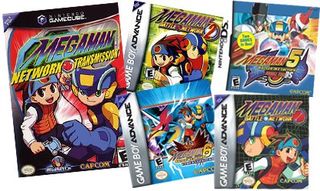
Well, there's good news and bad news for both sides. The next major push for the franchise was Mega Man Zero, a back-to-basics platformer that once again emphasized action and shockingly difficult boss battles. Despite the name "Mega Man," you only play as Zero, the focus-grouped co-star of Mega Man X.
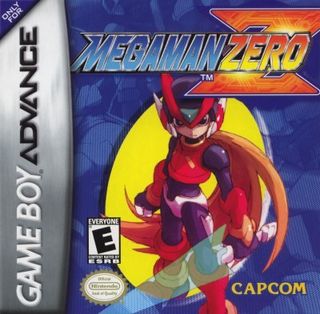
There weren't stages as in the main series, no This Man/That Man or anything, just one open area with interconnecting rooms as in Castlevania or Metroid. The blend of exploration, heavy stat-tracking and balls-out action ended up pleasing a bit from both sides of the Mega Man fanbase; the Zero series saw three sequels for GBA and then morphed into the latest creation, ZX.
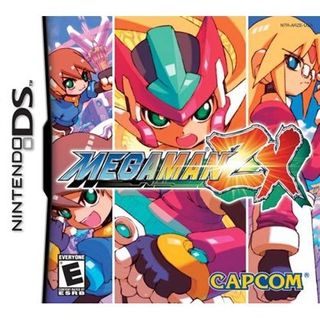
This being one of the most recent Mega Man re-inventions, we don't need to "retrospect" much about it, but for completion's sake it's a continuation of the X/Zero timeline and features more MMZero-like gameplay with open worlds and tons of blasting. They both bring the series first playable female antagonist (short of Roll in some of the side games) and have eight Pseudoroids to battle. There's already a sequel (which you could win, along with ZX and other goodies in our Mega Man contest) and if the past is any indication, there'll be more soon. That brings us to the most recent, seventh version of Mega Man, Star Force.
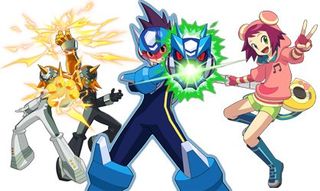
Introduced not even two years ago, there are already five versions of Star Force to play, all of which handle a lot like the six Battle Network games listed above. Take your pick: Pegasus, Leo, Dragon, Zerker X Saurian or Zerker X Ninja, they're all about the same.
Granted, you could say that about the first six Mega Man games, or the following deluge of X titles, Legend spin-offs or numerous Network games, but the fact remains that people love this little guy and want to see him continue on. Seeing as we're doing a whole week of content and have already said we're preparing something special for Thursday, odds are new, notable entry is coming soon, no?
Please sound off in our forum about this meaty retrospective and then, above all else, check here Thursday for something quite wonderful indeed...
Jun 30, 2008
A fomer Executive Editor at GamesRadar, Brett also contributed content to many other Future gaming publications including Nintendo Power, PC Gamer and Official Xbox Magazine. Brett has worked at Capcom in several senior roles, is an experienced podcaster, and now works as a Senior Manager of Content Communications at PlayStation SIE.

Oh, that's why the Stellar Blade devs were terrified by demo players: one fan's spent "about 60 hours" maxing Eve's skill tree before the action RPG is even out

A new Taylor Swift song mentions GTA, but some remember it mentioning Baldur's Gate 3, Final Fantasy 14, and more in hilarious Twitter trend
Most Popular



